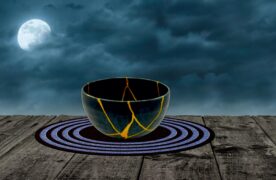The exhibition currently on show at the British Museum is called Troy: Myth and Reality but some plurals could have been used. Multiple myths and realities, some of an urgently contemporary kind, have created more than one Troy.

Sean Sheehan
An ancient city close to the northwest coast of Turkey is the probable site of the iconic Troy that Homer immortalized in the “Iliad”. His story reduces the ten-year siege of the city by a combined Greek force to climactic events and the death of the noble Trojan warrior Hector at the hands of the mighty Achilles.
Archaeology reveals more than one Troy, from the Iron Age to Hellenistic times, and it is only the Bronze Age, Hittite Troy that we think we might recognise from Homer.
Visitors to the city’s ruins today have little to see beyond crumbling walls and a giant wooden horse but this does not weaken the mystique that Homer, writing probably in the 8th century BCE, transmitted from oral traditions going back centuries earlier.
The exhibition celebrates both the materiality of the Bronze Age city and the Homeric Troy that fascinated the ancient Greeks. They knew that Homer was a storyteller and they loved the truth of his fiction while knowing that not everything he said about Troy really happened.

It is not that different for us: the first literary works in the Western world, the “Iliad” and “Odyssey”, sustain an aura that Hollywood succumbed to when Brad Pitt was cast as Achilles in its blockbuster epic.
The British Museum’s exhibition celebrates Troy’s multivalence with a wealth of material both ancient and modern. Athenian vases from the 5th century, depicting scenes from Homer’s Troy, are on display alongside finds from Schilemann’s excavations at the site of Troy – seen here for the first time since displayed in London in the 1870s.
The realities of Troy are not confined to ancient history and archaeology. “Queens of Syria”, a film about women refugees from Syria also is featured in the exhibition. The women, forced into exile in Jordan, created and performed their version of “The Trojan women”, a play by Euripides about the plight of bereaved women after the sack of Troy.
Another modern reality has an uninvited presence, though one of the British Museum’s own making that arises from the sponsorship it receives from BP, the multinational oil and gas company.

A performer from Queens of Syria and its director have objected to their film being used to cosmetically promote BP and climate activists have taken a 13-foot wooden Trojan horse into the grounds of the museum to protest against the sponsorship.
The form of the protest is inspired: when a wooden horse appeared outside Troy it was thought to be a gift from the departing Greeks but it was filled with enemy soldiers who came out of it at night and opened the city gates.
Apparent generosity was a disguise for death and ruination; an inescapable metaphor for BP.
“Troy: myth and reality” is at the British Museum until 8 March 2020.












.jpg)












